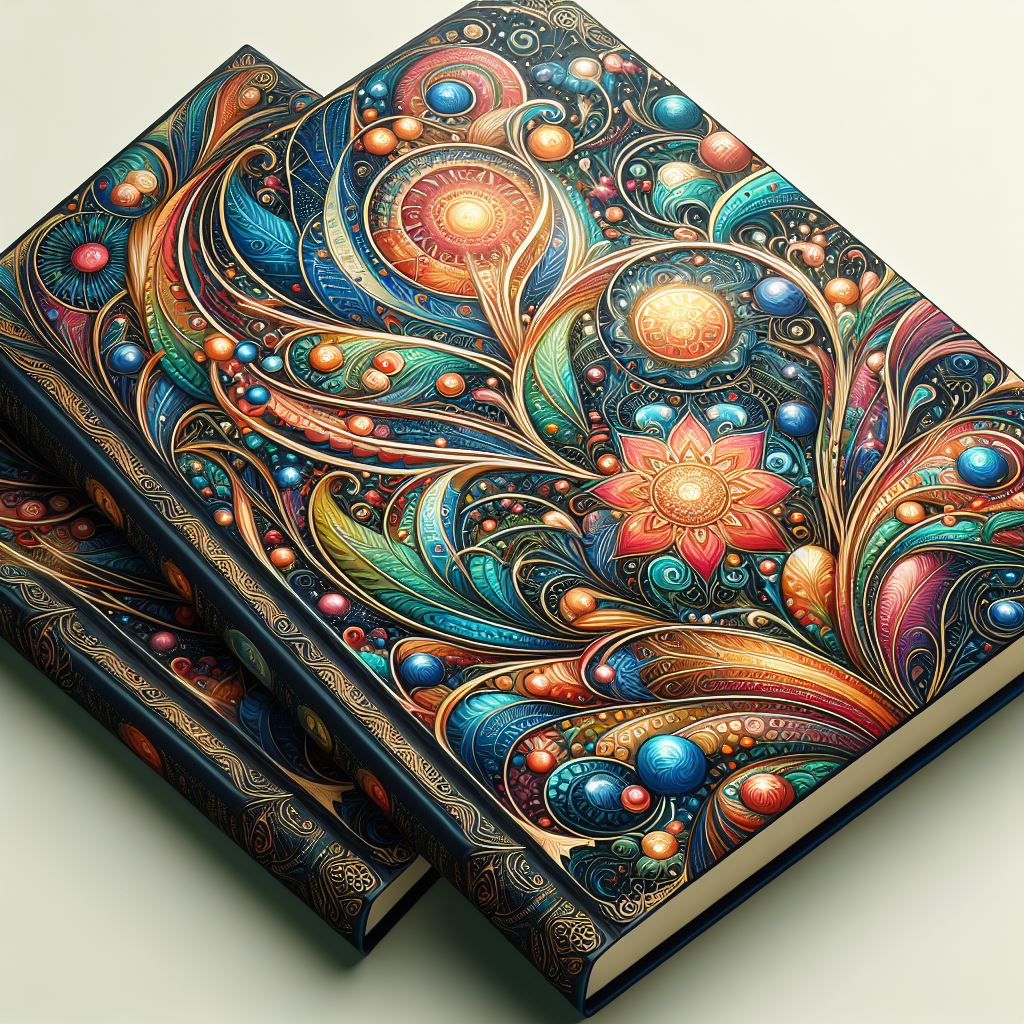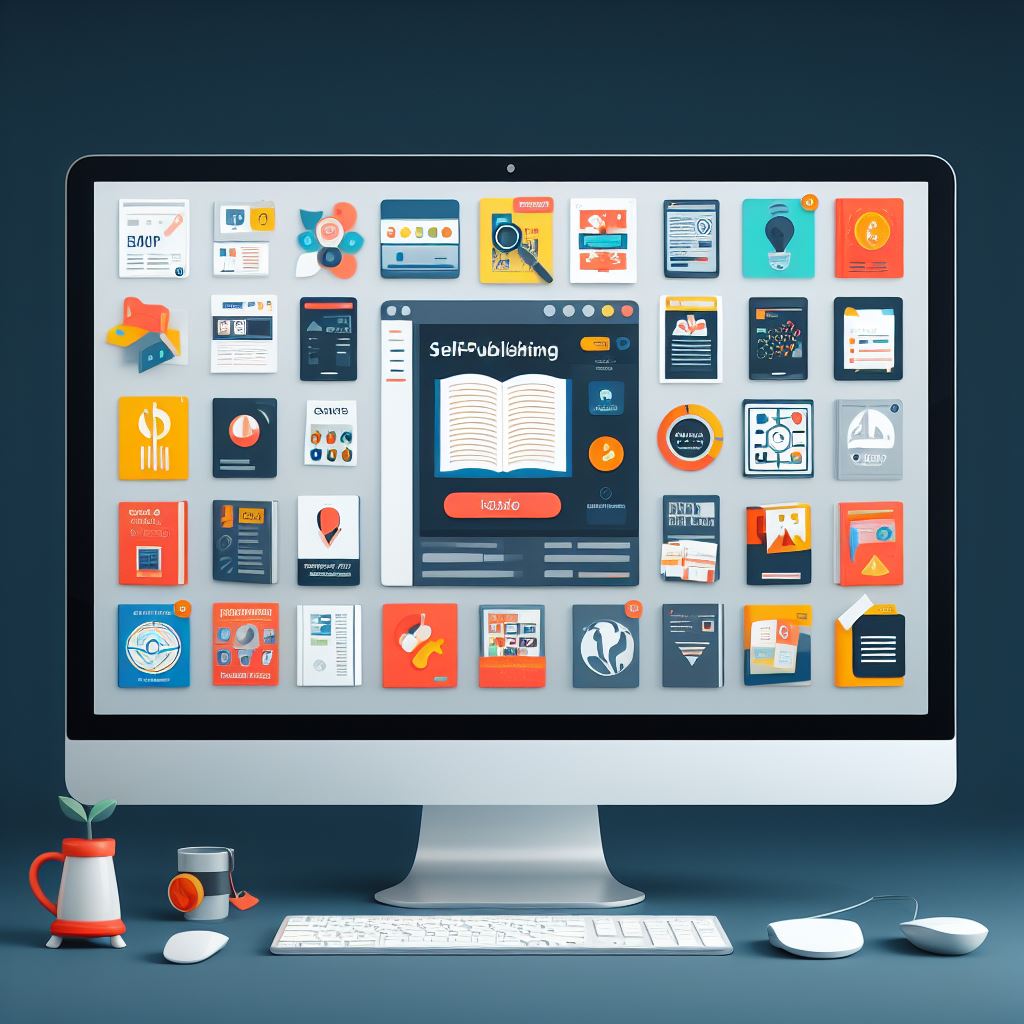Navigating the Literary Landscape: A Comprehensive Guide to Book Publishing
Table of Contents
| Section | Page |
|---|---|
| I. Introduction | 1 |
| II. Understanding the Different Publishing Routes | 2 |
| A. Traditional Publishing | 2 |
| 1. Definition and Characteristics | 2 |
| 2. Role of Literary Agents | 3 |
| 3. Pros and Cons of Traditional Publishing | 4 |
| B. Self-Publishing | 5 |
| 1. Definition and Popularity | 5 |
| 2. Various Self-Publishing Platforms | 6 |
| 3. Advantages and Disadvantages | 7 |
| III. Essential Steps in the Publishing Process | 8 |
| A. Writing and Editing | 8 |
| 1. Importance of Thorough Editing | 8 |
| 2. Types of Editing | 9 |
| 3. Resources for Finding Editors | 10 |
| B. Book Cover Design | 11 |
| 1. Importance of a Captivating Cover | 11 |
| 2. Elements of Effective Design | 12 |
| 3. Resources for Cover Design | 13 |
| C. Book Formatting | 14 |
| 1. Significance of Proper Formatting | 14 |
| 2. Formatting Options | 15 |
| 3. Resources for Formatting | 16 |
| D. Publication and Distribution | 17 |
| 1. Traditional and Self-Publishing | 17 |
| 2. Role of Publishing Companies | 18 |
| 3. Setting up an Author Platform | 19 |
| IV. Marketing and Promotion Strategies | 20 |
| A. Building an Online Presence | 20 |
| 1. Author Websites and Social Media | 21 |
| 2. Engaging with Readers | 22 |
| 3. Social Media Strategies | 23 |
| B. Book Reviews and Networking | 24 |
| 1. Impact of Positive Reviews | 24 |
| 2. Tips for Obtaining Reviews | 25 |
| 3. Networking with Authors | 26 |
| C. Book Launch and Events | 27 |
| 1. Importance of a Well-Planned Launch | 27 |
| 2. Ideas for Launch Events | 28 |
| 3. Virtual Book Tours and Events | 29 |
| V. Conclusion | 30 |

I. Introduction
A. Quote: “Books are uniquely portable magic.” – Stephen King
Introduce the enchanting world of books and the profound impact they have on readers.
B. Importance of Book Publishing
Discuss the pivotal role of book publishing in bringing stories to life and connecting authors with readers.
II. Understanding the Different Book Publishing Routes
A. Traditional Book Publishing
1. Definition and Characteristics
Traditional publishing involves the collaboration between authors and established publishing houses. Explore the traditional process and the credibility associated with it.
2. Role of Literary Agents
Explain the crucial role literary agents play in connecting authors with publishers, emphasizing their role as advocates in negotiations.
3. Pros and Cons of Traditional Publishing
Highlight the benefits of traditional publishing, such as wider distribution, and the drawbacks, including longer timelines and less creative control.
B. Self-Publishing
1. Definition and Popularity
Define self-publishing as an independent publishing approach gaining popularity among authors seeking creative control.
2. Various Self-Publishing Platforms
Explore diverse self-publishing platforms, emphasizing options like Book Publisher in Thiruvananthapuram for a regional touch.
3. Advantages and Disadvantages
Discuss the advantages of self-publishing, such as faster timelines, and the challenges, such as marketing responsibilities.
III. Essential Steps in the Publishing Process
A. Writing and Editing
1. Importance of Thorough Editing
Emphasize the significance of meticulous writing and editing, ensuring a polished manuscript.
2. Types of Editing
Explore developmental, copyediting, and proofreading, clarifying their roles in refining a manuscript.
3. Resources for Finding Editors
Recommend online platforms like Ebook Conversion Services to find professional editors.
B. Book Cover Design
1. Importance of a Captivating Cover
Stress the role of a visually appealing book cover in attracting readers.
2. Elements of Effective Design
Discuss essential elements like imagery and typography, guiding authors on impactful cover design.
3. Resources for Cover Design
Recommend resources like Poetry Publishing Companies for poets seeking specialized cover design.
C. Book Formatting
1. Significance of Proper Formatting
Explain the importance of consistent formatting for both print and ebook versions.
2. Formatting Options
Discuss formatting options, guiding authors through the technical aspects of presentation.
3. Resources for Formatting
Direct authors to resources like Self-Publishing Platforms for tools and professionals specializing in book formatting.
D. Publication and Distribution
1. Traditional and Self-Publishing
Compare traditional and self-publishing routes, providing insights into the publishing process.
2. Role of Publishing Companies
Highlight the role of publishing companies and distributors, emphasizing the significance of reputable partners.
3. Setting up an Author Platform
Guide authors on establishing an author platform for effective marketing and promotion, utilizing platforms like Book Publisher in Bengaluru.

IV. Marketing and Promotion Strategies
A. Building an Online Presence
1. Author Websites and Social Media
Encourage authors to create personalized author websites and leverage social media platforms for building an online presence.
2. Engaging with Readers
Highlight the importance of direct engagement with readers through social media interactions and community building.
3. Social Media Strategies
Provide practical strategies for utilizing social media effectively in book promotion, integrating keywords like Book Advertising.
B. Book Reviews and Networking
1. Impact of Positive Reviews
Explain how positive book reviews contribute to increased visibility and sales.
2. Tips for Obtaining Reviews
Offer practical tips for authors to secure reviews, incorporating keywords like Book Publisher Near Me.
3. Networking with Authors
Encourage authors to network with peers and industry professionals, utilizing resources like [Publishing Companies
](https://apnapublisher.in/publishing-companies/).

C. Book Launch and Events
1. Importance of a Well-Planned Launch
Emphasize the significance of a thoughtfully planned book launch to create buzz.
2. Ideas for Launch Events
Suggest creative ideas for in-person and virtual book launch events, integrating keywords like Book Marketing.
3. Virtual Book Tours and Events
Guide authors on organizing virtual book tours, leveraging resources such as Publish Your Book.
V. Conclusion
A. Recap of Key Steps
Summarize the crucial steps involved in the book publishing journey.
B. Encouragement for Aspiring Authors
Motivate aspiring authors to pursue their publishing dreams with determination.
C. Resources for Further Guidance
Provide a list of resources, including Book Publication and others, for continuous guidance and support.
- What are the 7 steps of the publishing process? The seven steps of the publishing process are: a. Writing and Editing: Craft and refine your manuscript.
b. Book Design: Design the layout and cover of your book.
c. ISBN Assignment: Obtain an International Standard Book Number.
d. Printing (if applicable): Produce physical copies of your book.
e. Distribution: Get your book into bookstores and online retailers.
f. Marketing: Promote your book to reach a wider audience.
g. Sales and Royalties: Manage the sales and receive royalties. For more detailed insights, you can refer to resources such as Reedsy’s Guide to Publishing. - What is the process of publishing a book? The process of publishing a book involves several key steps: a. Writing and Editing: Craft and polish your manuscript.
b. Submission: Submit your manuscript to literary agents or publishers.
c. Contract Negotiation: Negotiate the terms of the publishing contract.
d. Editing and Design: Collaborate on editing and design aspects.
e. Production: Print physical copies or format for e-books.
f. Distribution: Distribute your book to bookstores and online platforms.
g. Marketing: Promote your book to generate interest and sales. For a detailed guide, you can explore The Book Designer’s Publishing Process. - How much does it cost to publish a book? The cost of publishing a book can vary widely. Traditional publishing may not involve direct costs for the author, while self-publishing costs can range from a few hundred to several thousand dollars. It depends on factors like editing, cover design, and distribution. To estimate costs, you can use tools like Reedsy’s Book Cost Calculator.
- What are the 7 steps to self-publishing a book? The seven steps to self-publishing a book are: a. Writing and Editing: Craft and edit your manuscript.
b. Book Design: Design the layout and cover.
c. ISBN Assignment: Obtain an International Standard Book Number.
d. Distribution: Publish your book on platforms like Amazon.
e. Marketing: Promote your book through various channels.
f. Sales and Royalties: Monitor sales and receive royalties.
g. Feedback and Iteration: Gather feedback for future improvements. Explore Self-Publishing School for a comprehensive guide. - How can I publish my book for free? Self-publishing platforms like Amazon Kindle Direct Publishing (KDP) and Draft2Digital allow authors to publish e-books for free. However, additional services like professional editing or cover design may incur costs. For free self-publishing guidance, check Kindle Direct Publishing.
- What is ISBN code for books? An ISBN (International Standard Book Number) is a unique identifier for books. It ensures accurate cataloging and tracking of books in the publishing industry. Each format and edition of a book requires a distinct ISBN. Learn more at ISBN International.
- What is the first step in publishing? The first step in publishing is typically writing and editing your manuscript. Once you have a polished manuscript, you can proceed to submit it to literary agents or publishers or explore self-publishing options. For a beginner’s guide, visit Publishing Basics.
- How long does it take to publish a book? The timeline for publishing a book varies. Traditional publishing can take one to two years from submission to release. Self-publishing timelines are shorter, typically ranging from a few months to a year. Get insights into timelines at Writer’s Digest.
- How do I publish my first book? To publish your first book, follow these steps: a. Write and edit your manuscript.
b. Explore traditional publishing or self-publishing.
c. Submit to literary agents or publishers.
d. Consider self-publishing platforms.
e. Follow the necessary steps for editing, design, and distribution. For guidance, visit The Creative Penn. - Who pays to publish a book? In traditional publishing, the publisher covers the costs of production, distribution, and marketing. In self-publishing, the author bears the costs, including editing, cover design, and distribution fees. Learn more at The Balance Careers.
- How do I get my book to a publisher? To get your book to a traditional publisher, follow these steps: a. Write and edit your manuscript.
b. Research literary agents or publishers.
c. Prepare a compelling query letter.
d. Submit your manuscript to selected agents or publishers.
e. Respond to any feedback or offers received. Explore Writer’s Digest’s Guide on Query Letters. - Is it hard publishing a book? Publishing a book can be challenging due to competitive markets and the varying demands of traditional and self-publishing routes. Persistence, research, and dedication are key to navigating the process successfully. Read author experiences at The Write Life.
- How do authors get publishers? Authors secure publishers by submitting query letters and manuscripts to literary agents or directly to publishers. Building a strong author platform, networking, and persistence are crucial in the process. For detailed insights, visit The Authors Guild.
- Do you get paid after publishing a book? In traditional publishing, authors receive advances and royalties after publishing. In self-publishing
, authors earn royalties directly from book sales.
Understand royalty structures at [BookBaby](https://www.bookbaby.com/).- How much do authors earn per book? Author earnings per book vary widely. In traditional publishing, authors typically earn a percentage of the book’s retail price as royalties, usually ranging from 6% to 25%. In self-publishing, authors can earn higher percentages, often between 35% to 70% of the retail price. Explore earning potential at The Guardian.
- What is the minimum pages to publish a book? There is no strict minimum page requirement for publishing a book. The ideal length varies by genre and audience. Novels often range from 60,000 to 100,000 words, while children’s books or poetry collections may have fewer pages. For genre-specific guidelines, visit Reedsy.
- How much is it to publish a book on Amazon? Publishing a book on Amazon through Kindle Direct Publishing (KDP) is generally free. Authors only incur costs if they choose optional paid services such as professional editing or book cover design. Get details on Amazon KDP Pricing.
- How much do authors make per book on Amazon? Authors earn royalties from book sales on Amazon through KDP. The royalty rate depends on factors like the book’s price, distribution channels, and whether it’s part of Kindle Unlimited. Calculate potential earnings using the Amazon KDP Royalty Calculator.
- Is it better to self-publish or get a publisher? The choice between self-publishing and traditional publishing depends on individual goals and preferences. Traditional publishing offers prestige and support, while self-publishing provides creative control and higher royalty rates. Compare pros and cons at The Balance Small Business.
- How many followers do you need to publish a book? The number of followers needed to publish a book varies. While a strong author platform with a significant following can enhance visibility, it’s not a strict requirement. Quality of writing and a compelling story remain key factors. Gain insights into building an author platform at Jane Friedman.
- Can you self-publish a book? Yes, authors can self-publish a book using platforms like Kindle Direct Publishing (KDP), Smashwords, or other self-publishing services. It provides authors with control over the entire publishing process. Start your self-publishing journey at Smashwords.
- How can I self-publish my book in India? Authors can self-publish in India by using platforms like Notion Press, Pothi, or Kindle Direct Publishing (KDP). These platforms offer services tailored to the Indian market. Explore Notion Press.
- How did JK Rowling get published? J.K. Rowling got published through traditional publishing. Her manuscript for “Harry Potter and the Philosopher’s Stone” was accepted by Bloomsbury, leading to the start of the immensely successful Harry Potter series. Read about J.K. Rowling’s journey at Biography.
- Is ISBN free? In some countries, authors can obtain ISBNs for free through government agencies. However, in others, obtaining an ISBN may involve a fee. Check with your country’s ISBN agency for specific guidelines. Explore ISBN information at Bowker.
- What is ISSN used for? The ISSN (International Standard Serial Number) is used to uniquely identify periodicals, such as magazines and journals. It facilitates accurate cataloging and identification of serial publications. Learn more at International ISSN Centre.
- Can I publish a book without ISBN? While it’s possible to publish a book without an ISBN, having one enhances the book’s visibility and makes it easier for retailers to track and sell. Some self-publishing platforms may assign a free ISBN, or authors can purchase one. Explore ISBN options at ISBN Agency.